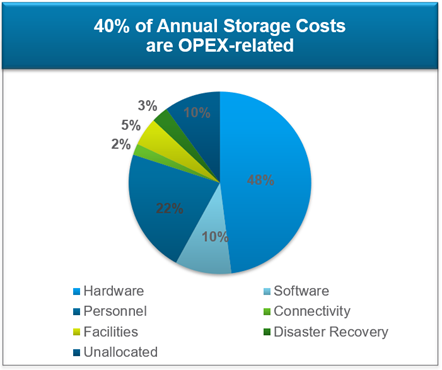 Daryl Visman
VMware Technical BDM at Dicker Data
Daryl Visman
VMware Technical BDM at Dicker Data
vSAN is VMware’s HCI solution for anyone who is looking for a one stop solution for virtualization. Firstly, vSAN is hardware agnostic so that you can choose preferred HW venders and use existing processes. It is fully integrated into vSphere and vCentre, your whole solution can be running on one software stack, one vender support and integrated workflows. VMware’s kernel embedded functions and features enhanced the visibility and management capability, so that you can meet the exact needs of the application without any waste, do more with less, and have a predictable and linear scaling of your infrastructure. In general, you need to investigate your IT environment, check your technical resource capability and the business requirement before making any decision.

To keep the promise of low upfront cost and affordable scaling with no waste, the VMware HCI Assessment is a key phase when sizing your VMware vSAN environment. The vSAN ReadyNode Sizer can directly import the outputs from three separate assessment / information gathering tools. Users can also manually enter information into the vSAN ReadyNode Sizer as they wish.
These three tools are;
For example with LiveOptics, once you have performed an assessment using this tool, the data captured can be imported directly into the VMware’s “vSAN ReadyNode Sizer”. To enable this, you can use the API based integration of Live Optics with vSAN Sizer. Or you can use the following steps to manually feed in data.
Step 1: Selecting number of VMs and Capacity- select the Total Capacity and the number of Guest VMs for the Storage/VM and number of VMs field in the vSAN ReadyNode Sizer.
Step 2: Compute, Memory and IOPS metrics- you can capture the vCPU/Core, vCPU/VM, vRAM/VM and IOPS.
With Step 1 and Step 2 completed, you can proceed to the recommendation at this stage or continue to optimize with further steps.
Step 2a (optional): Tune cluster assumptions to your workloads - you have the option to adjust the workload profile and cluster assumptions Sheet.
Step 3 (optional): Specific Host Selection- In this scenario, a user wants to use specific hosts to move to vSAN. In this scenario, perform step 1. Then select the desired hosts under the project folder and recalculate the report. Once this is done, you can follow the instructions provided in step 2 to translate the compute and IOPS metrics.
Step 4 (optional): Per VM selection- If you want to move certain VMs to vSAN, select the “Export CSV” option on the Guest VMs tab and then filter the VMs that you want to move via the excel file. The remaining fields can be captured using Step 2.
Step 5: Sizing recommendation: After translating the data from the Live Optics capture to the vSAN ReadyNode Sizer’s inputs, select the “Recommendation” button to proceed. Based on the input values, you will obtain a best match ReadyNode Profile recommendation, Cluster size, Raw and Usable capacity, Disk Layout, drive specification, etc.
Alternatively, you can request a free HCI assessment from VMware to get an easy-to-use, online dashboard that will help you get visibility into your IT environment and workloads so that you can identify areas to operate more efficiently and potential cost savings.
You can also return the completed report to Dicker’s VMware team for a suitable vSAN solution to be quoted.
Dicker Data has a dedicated in house, highly-certified VMware team inclusive of presales, BDMs and product specialists, who work directly with our partners offering reliable, strategic and proactive IT guidance and support across the entire value chain. Learn more here.
You can contact our Dicker Data VMware team at licensing@dickerdata.com.au to discuss building a VMware vSAN solution and your requirements.

17 December, 2025 - 9 min read
As 2025 draws to a close, we’ve taken a moment to reflect on the... Read more

12 December, 2025 - 5 min read
We were thrilled to host the third edition of the Dicker Data... Read more

10 December, 2025 - 2 min read
In today’s fast-paced, AI-driven world, your customer's... Read more
Subscribe to the Dicker Data blog
for regular updates and insights

Dicker Data (ASX: DDR) is an Australian owned and operated, ASX listed hardware distributor with over 46 years experience. Our dedicated sales and presales teams are comprised of experienced product specialists who are focused on using their in-depth knowledge to help customers tailor solutions to suit their client’s needs.
Phone: 1800 688 586
Email: sales@dickerdata.com.au